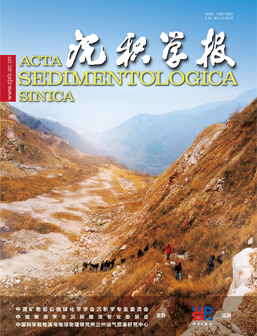Division of the Sequence Stratigraphy of the Sinian Qigebrak Formation in the Northwest Tarim Basin——Evidence from the High-resolution Analysis of Depositional Facies and the Fischer Plot
doi: 10.14027/j.issn.1000-0550.2024.040
- Received Date: 2023-12-06
- Available Online: 2024-04-10
-
Key words:
- high-resolution depositional facies /
- Fischer plot /
- Qigebrak Formation /
- northwest Tarim Basin
Abstract: [Objective] The Qigebrak Formation developed abundant microbial carbonates, which are the favorable target for deep to ultra-deep oil and gas exploration. However, the existing stratigraphic division scheme of the Qigebrak Formation remains controversial, hindering the analysis of reservoir depositional evolution and distribution prediction. Further in-depth research and clarification are urgently needed. [Methods] This study focused on the Shiairik section in the northwest Aksu area of the Tarim Basin to define the depositional environment and sea-level change, and conduct a sequence stratigraphic division of the Qigebrak Formation based on the analysis of high-precision depositional facies and the Fischer plot. [Results] Ten main facies are recognized from the Qigebrak Formation and grouped into a carbonate ramp platform. Two subfacies; i.e., inner and middle ramp, are developed under this setting. The inner ramp consists of the tidal flat, lagoon, tidal channel, and grain shoals. Eight subtypes of peritidal cycles, two subtypes of shallow subtidal cycles and two subtypes of middle-ramp cycles are identified. Based on the stacking patterns reflected in the Fischer diagrams, analysis of orders of depositional facies and proportion of subtidal facies, the Qigebrak is divided into four third-order T-R sequences (SQ1–SQ4). Among these sequences, SQ1 only records the regressive system tract in the Qigebrak Formation, whereas SQ4 only preserves the transgressive system tract. [Conclusions] This study suggests that (1) it is reasonable to divide the Qigebrak Formation into four sequences; (2) the top of the Qigebrak Formation could have experienced the million-year-scale exposure and erosion, which would favor the formation of scaled reservoirs.
| Citation: | Division of the Sequence Stratigraphy of the Sinian Qigebrak Formation in the Northwest Tarim Basin——Evidence from the High-resolution Analysis of Depositional Facies and the Fischer Plot[J]. Acta Sedimentologica Sinica. doi: 10.14027/j.issn.1000-0550.2024.040 |






 DownLoad:
DownLoad: